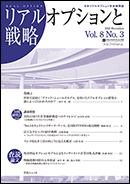Volume 8, Issue 3
Displaying 1-8 of 8 articles from this issue
- |<
- <
- 1
- >
- >|
Preface
-
2016Volume 8Issue 3 Pages 1
Published: 2016
Released on J-STAGE: July 14, 2017
Download PDF (459K)
-
2016Volume 8Issue 3 Pages 2-5
Published: 2016
Released on J-STAGE: July 14, 2017
Download PDF (729K) -
2016Volume 8Issue 3 Pages 6-9
Published: 2016
Released on J-STAGE: July 14, 2017
Download PDF (632K) -
2016Volume 8Issue 3 Pages 10-16
Published: 2016
Released on J-STAGE: July 14, 2017
Download PDF (1146K) -
2016Volume 8Issue 3 Pages 17-20
Published: 2016
Released on J-STAGE: July 14, 2017
Download PDF (712K)
Reviewed Paper
-
2016Volume 8Issue 3 Pages 21-32
Published: 2016
Released on J-STAGE: July 14, 2017
Download PDF (860K) -
2016Volume 8Issue 3 Pages 33-46
Published: 2016
Released on J-STAGE: July 14, 2017
Download PDF (818K)
Cover, Publisher
-
2016Volume 8Issue 3 Pages Cover_1_ja-Cover_1_en
Published: 2016
Released on J-STAGE: July 14, 2017
Download PDF (2662K)
- |<
- <
- 1
- >
- >|
